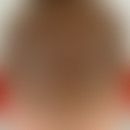Synonym(s)
DefinitionThis section has been translated automatically.
Rare, congenital cholestatic liver disease. It is also known as progressive familial intrahepatic cholestasis type PFIC1.
Occurrence/EpidemiologyThis section has been translated automatically.
The prevalence of PFIC types 1-3 is 1:50,000 to 1: 100,000 births. PFIC1 < PFIC2 and PFIC3.
You might also be interested in
ClinicThis section has been translated automatically.
The disease is already registered in early infancy. Signs of cholestasis: discoloured stools, dark urine, recurrent or permanent icterus, hepatomegaly and severe itching. Patients develop progressive cirrhosis of the liver at an early stage. Extrahepatic symptoms have been reported, including persistent short stature, watery diarrhoea, pancreatitis and sensorineural deafness.
HistologyThis section has been translated automatically.
Channelicular cholestasis; no ductal proliferations.
DiagnosisThis section has been translated automatically.
Cholangiography: normal biliary system. Prenatal diagnosis is recommended if both parents have a mutated gene.
TherapyThis section has been translated automatically.
The treatment of Byler's syndrome consists of a liver transplantation (partial liver transplantation) in about 50% of those affected. It leads to a cure.
Ursodesoxycholic acid: Ursodesoxycholic acid can be used as a bridging agent to slow down the progress of the disease.
MCT diet (diet with medium-chain triglycerides. MCT=Acronym for "medium-chain triglycerides"). improves the absorption of fat and fat-soluble vitamins.
The itching can be reduced by Rifampicin
Progression/forecastThis section has been translated automatically.
Without a liver transplant, the prognosis is poor. Only few children reach the age of 10 years.
LiteratureThis section has been translated automatically.
- Keitel V et al (2019) Targeting FXR in cholestasis. Handb Exp Pharmacol doi: 10.1007/164_2019_231.
Vitale G et al (2019) Familial intrahepatic cholestasis: New and wide perspectives. Dig Liver Dis 51:922-933.
Disclaimer
Please ask your physician for a reliable diagnosis. This website is only meant as a reference.




